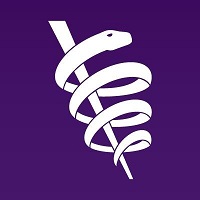 The American Medical Association (AMA) (@AmerMedicalAssn) announced that the Current Procedural Terminology (CPT®) code set is ready for the rollout of third doses of the Pfizer and Moderna COVID-19 vaccines. The CPT Editorial Panel has expedited approval of a new administration code that is unique to a third dose of the current COVID-19 vaccine from Moderna. A new administration code for a third dose of the current COVID-19 vaccine from Pfizer was announced by the AMA on July 30.
The American Medical Association (AMA) (@AmerMedicalAssn) announced that the Current Procedural Terminology (CPT®) code set is ready for the rollout of third doses of the Pfizer and Moderna COVID-19 vaccines. The CPT Editorial Panel has expedited approval of a new administration code that is unique to a third dose of the current COVID-19 vaccine from Moderna. A new administration code for a third dose of the current COVID-19 vaccine from Pfizer was announced by the AMA on July 30.
The two vaccine administration codes are effective for immediate use as the U.S. Food and Drug Administration (FDA) has authorized third doses of COVID-19 vaccines from Pfizer and Moderna for certain people with weakened immune systems.
“Given that CDC data shows some immunocompromised patients lack the antibodies needed to fight COVID-19 infection, adding an additional dose to the primary series for this population can help protect these individuals from unnecessary hospitalizations and deaths” said AMA President Gerald Harmon, M.D. in statement responding to the FDA’s authorization. “It is important to keep in mind that this recommendation is for a limited population and an additional dose of COVID-19 vaccine is not recommended for all fully vaccinated people at this time.”
For quick reference, the CPT codes and long descriptors assigned to third dose administration of the current Pfizer and Moderna COVID-19 vaccines are:
Pfizer
0003A – Immunization administration by intramuscular injection of severe acute respiratory syndrome coronavirus 2 (SARS-CoV-2) (coronavirus disease [COVID-19]) vaccine, mRNA-LNP, spike protein, preservative free, 30 mcg/0.3 mL dosage, diluent reconstituted; third dose
Moderna
0013A – Immunization administration by intramuscular injection of severe acute respiratory syndrome coronavirus 2 (SARS-CoV-2) (coronavirus disease [COVID-19]) vaccine, mRNA-LNP, spike protein, preservative free, 100 mcg/0.5 mL dosage; third dose
These CPT codes and descriptors are used to report the actual work of administering the vaccine, in addition to all necessary counseling provided to patients or caregivers and updating the electronic record.
Short, medium and long descriptors for all the new vaccine-specific CPT codes can be accessed on the AMA website, along with several other recent modifications to the CPT code set that have helped streamline the public health response to the SARS-CoV-2 virus and the COVID-19 disease. To help ensure accurate coding and reporting of COVID-19 vaccines and immunization services, the AMA offers a code finder resource to help identify the appropriate CPT code combination for the type and dose of COVID-19 vaccine provided to each patient.
Changes to the CPT code set are considered through an open editorial process managed by the CPT Editorial Panel that collects broad input from the health care community and beyond to ensure CPT content reflects the coding demands of digital health, precision medicine, augmented intelligence, and other aspects of a modern health care system. This rigorous editorial process keeps the CPT code set current with contemporary medical science and technology so it can fulfill its vital role as the trusted language of medicine today and the code to its future.
Questions on CPT coding and content should be directed to the CPT Network, the authoritative source for CPT coding answers. Also consult the AMA online library of COVID-19 CPT coding and guidance.
About the American Medical Association
The American Medical Association is the physicians’ powerful ally in patient care. As the only medical association that convenes 190+ state and specialty medical societies and other critical stakeholders, the AMA represents physicians with a unified voice to all key players in health care. The AMA leverages its strength by removing the obstacles that interfere with patient care, leading the charge to prevent chronic disease and confront public health crises and, driving the future of medicine to tackle the biggest challenges in health care.
